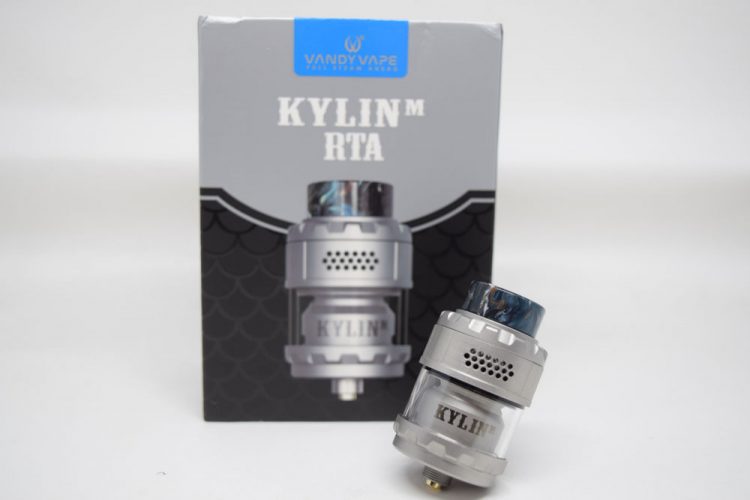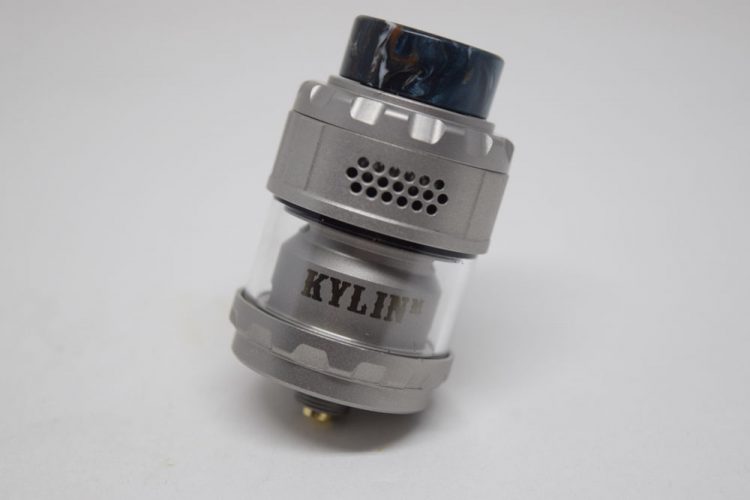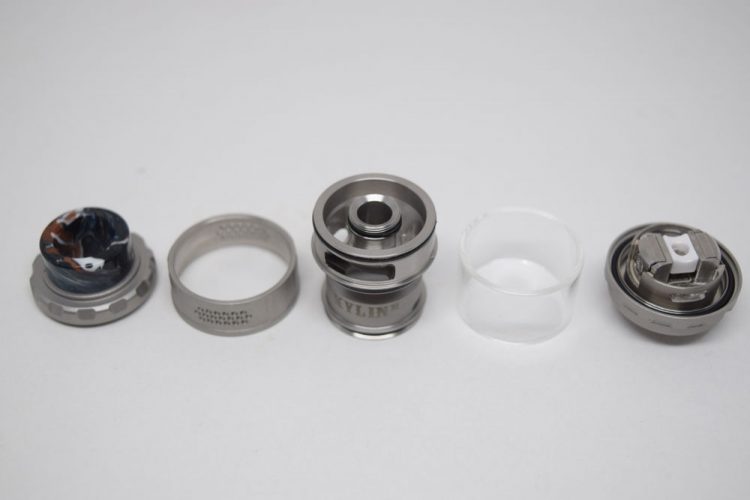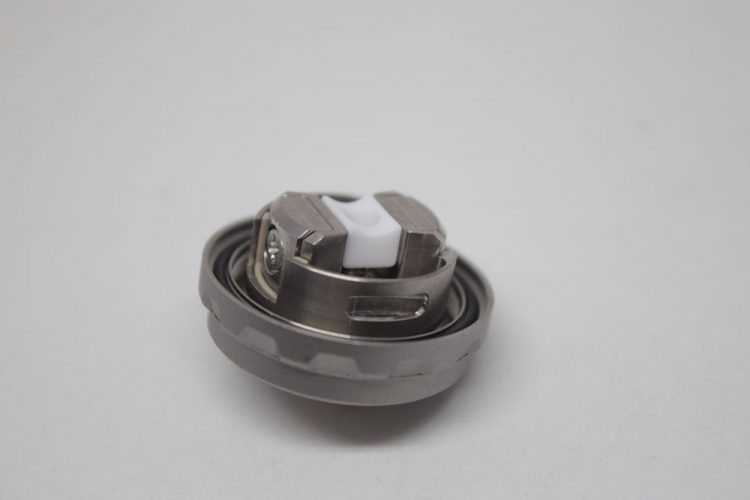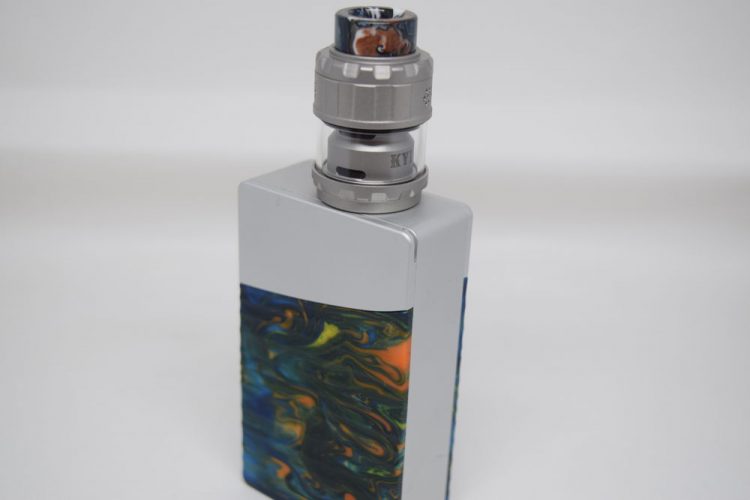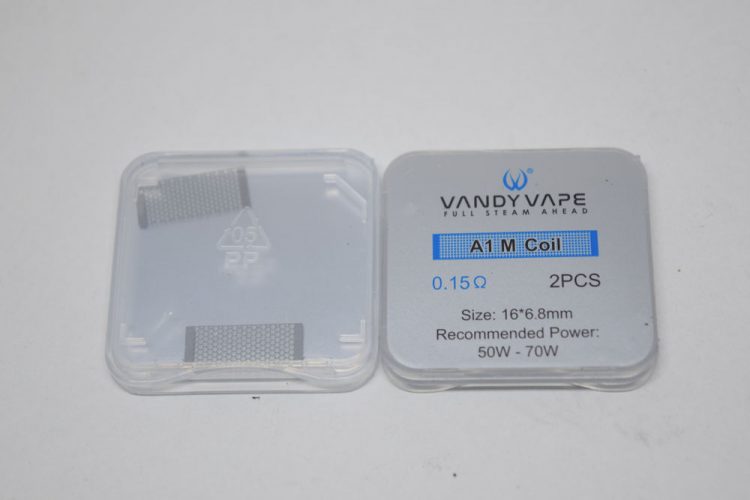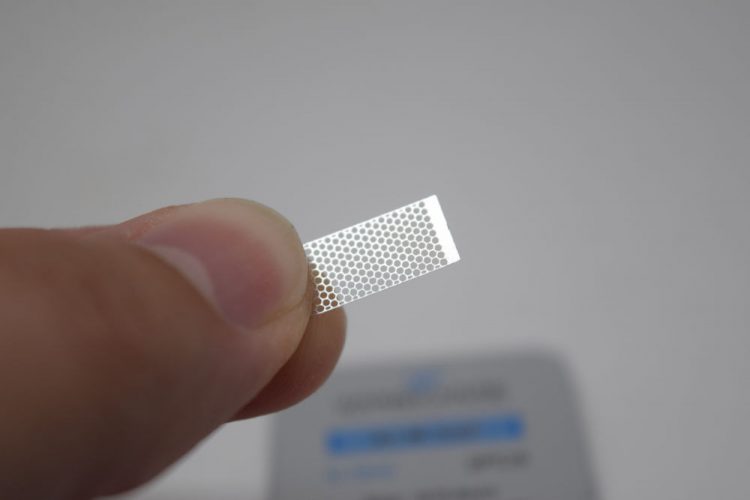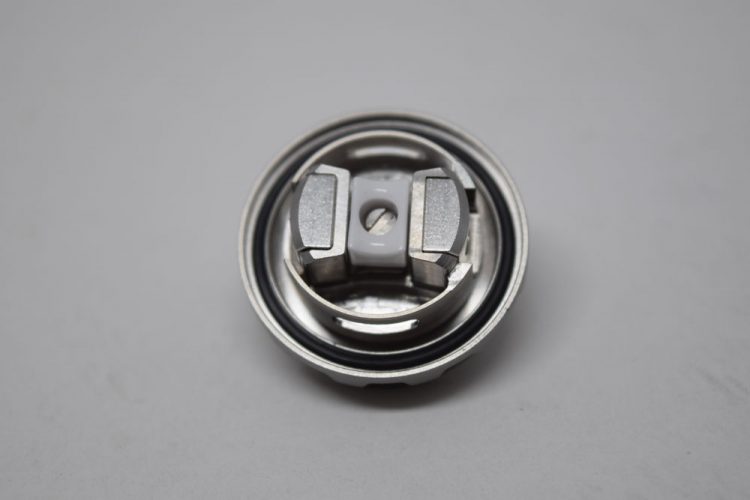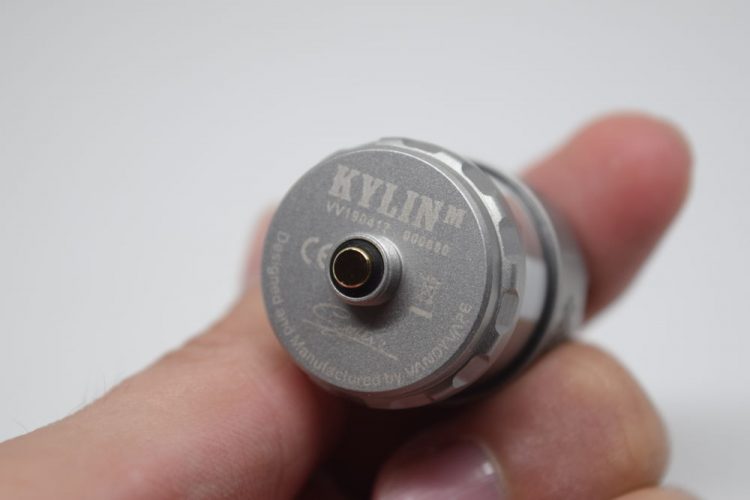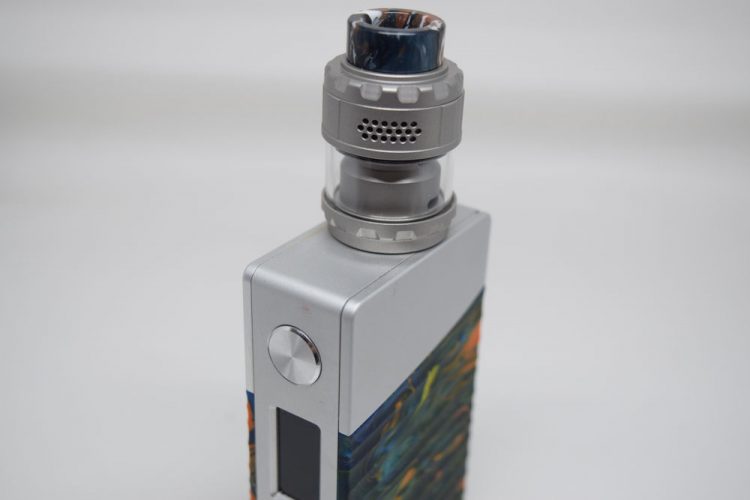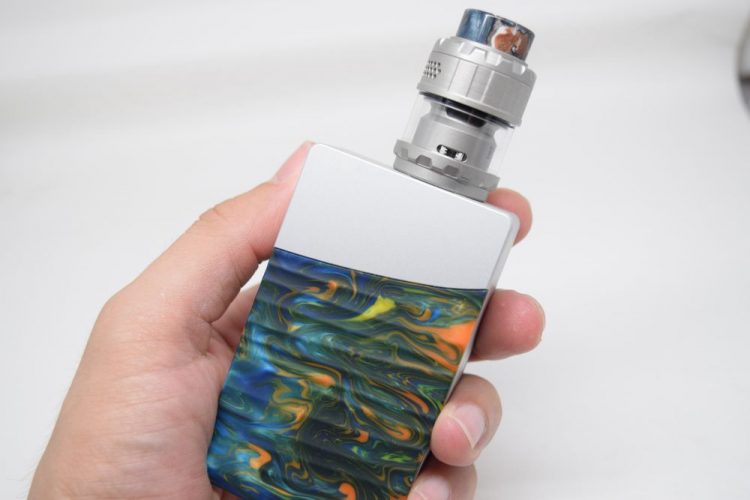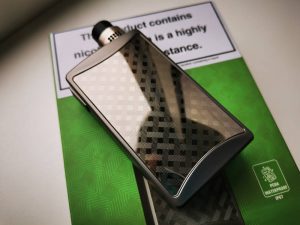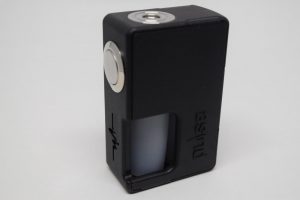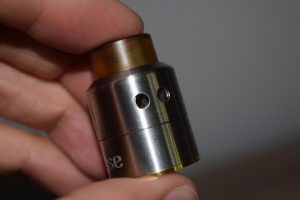Vandy Vape Kylin M RTA Review
Vandy Vape has done mesh rebuildable atomizers before, they just haven’t been as successful as the Chinese company had hoped. Both the Mesh RDA and Mesh RTA generated a lot of hype when they came out, but they weren’t quite the game-changers some people thought they could have been. That hasn’t stopped Vandy Vape from trying to produce a real winner in the mesh department, and now they’re giving it another shot with the Kylin M RTA, a top-airflow atomizer that’s much simpler to build on thanks to an already popular build-deck design.
A Look at the Contents
The Vandy Vape Kylin M RTA comes in a standard packaging – an old fashion black cardboard box featuring a picture of the RTA on the front, and a list of contents, as well as company information and a handy diagram for installing the coil and wicking, on the back. If you’re one of those few people who actually check the authenticity of their products online, there’s a scratch-and-check seal on the side of the box.
Inside the box we have the Kylin M RTA placed next to a spare bubble glass and two plastic cases that kind of look like microchips at first glance. They’re actually just plastic boxes, each containing a couple of different mesh strips that you can use as coils. So you get four coils included in the kit, which is pretty generous considering some manufacturers don’t bother including any coils at all, mesh or otherwise.
Also in the box you’ll find a bag of accessories – spare o-rings, screws and springs for the build deck, a small screwdriver, 510 drip tip adaptor, and a cylindrical piece of metal that acts as a coil jig – a user manual and two cotton laces that make wicking this RTA a bit easier than regular cotton.
Design and Build Quality
The new Kylin M retains the general design of the original Vandy Vape Kylin RTA, but incorporates some huge-enough changes to stand out as a completely different device. The first main difference you notice is the honeycomb-pattern top airflow system that replaces the bottom airflow of the original Kylin. That’s actually the only visible difference. The 810 resin drip tip is similar to that of the old Kylin, the knurling on the top cap and the base is the same, and even the chimney has the same design. Things are much different on the inside, so this definitely not more of the same.
The Kylin M RTA measures 34mm-long and 24mm in diameter, making it slightly shorter than the previous atomizers in this line, and is currently available in seven different colors. I received the Frosted Grey version for this review, which looks pretty cool if you prefer a matte finish. There’s also gold and rainbow if you want to stand out.
At the top we have a standard 810 resin drip tip that you can swap out for any other 810, or even a 510 with the included adapter. Ten we have the top cap which unscrews to reveal one of the deepest fill-ports I have ever seen on an atomizer. The holes are located at the bottom of a reservoir, right where the glass section of the tank starts, which actually allows you to fill past the fill ports if you want to, because there is so much room between the tank and the top cap. It’s an interesting design, although not very practical, in my opinion.
Right under the top cap we have the airflow control ring featuring honeycomb-pattern slots. You can remove the ring to check out the actual airflow slots cut into the atomizer. They are curved at an angle, similar to those on the very popular Dead Rabbit RDA so they hit the mesh coil directly for maximum flavor. These are massive airflow slots, though, and unless you have super strong lungs, you’ll mist likely feel the need to close the airflow to half, at the very least.
The tank section looks pretty ordinary, apart from the visible fill holes at the top of the chimney, and so does the base section, which simply seals off the tank and features a non-adjustable, gold-plated pin at the bottom.
As I mentioned, on the inside the Kylin M is very different than its predecessors. The M stands for Mesh so this features an internal design meant to accommodate mesh strips rather than the usual metal coils we’ve all been using for over a decade now. Vandy Vape has some experience in this field, with two previous devices – the Mesh RDA and Mesh RTA – designed with mesh in mind, but they weren’t the most successful devices. For one, they weren’t the easiest things to build on, but this time around all Vandy Vape had to do was borrow someone else’s idea.
As is often the case when Chinese companies are involved, copyright isn’t very important. A company will just take another’s design, improve on it slightly and use it as its own. That’s a controversial practice in the West, but there’s no denying that it’s beneficial for the end user. It sometimes makes things cheaper, other times it makes them better, and the Kylin M RTA is a prime example.
As a connoisseur, looking at the build deck of the Kylin M, you’d think it was that of the Wotofo Profile Unity RTA, and technically, you would be right. Vandy Vape took the design of the Profile Unity build deck, made it slightly better by adding springs to the clamp system to have them retract automatically, and adding some barriers that prevent the mesh from falling into the base. They also implemented top-airflow, whereas the Profile Unity uses bottom airflow. So while the deck looks the same on both devices, it’s actually different, sort of.
Setting Up
I’ve never been a fan of mesh RTAs and RDAs simply because I found setting up the strips a pain in the behind. That was not the case with the Vandy Vape Kylin M, though. Thanks to the slight changes to the design of the build deck, this thing is super easy to set up. Even if you have zero experience building and installing coils, you should be able to get this atomizer ready for vaping.
First things first, make sure to take the Kylin M apart and wash all the parts thoroughly. Companies claim to clean their devices themselves, but it’s not unusual to find machining oil residue when you take atomizers apart. So give all the components a good rinse with warm water and either let them dry overnight or use a paper tissue.
Once you’re ready to build, take one of the four bits of mesh included in the Kylin M kit and the cylindrical piece of metal from the accessories bag. Just bend the strip around the metal and you end up with a mesh arch that fits perfectly in the clamps of the build deck. Once the mesh is all bent up, unscrew the screws on the clamps to open them and just drop the mesh in there. Then gently place a finger over the mesh arch to hold it in place as you screw the clamps shut again. And that’s all there is to it.
Of course, there’s more to this atomizer than installing the mesh coils. Wicking is crucial to an enjoyable vaping experience, and Vandy Vape knows this, which is why they printed a diagram of how you are supposed to cut the cotton in order to seal the juice slots at the bottom of the build deck. I would add that you want to make sure the cotton strips aren’t too thick, as this is a top-airflow atomizer, so the chance of leaking is virtually zero. You can get some gurgling or spit-back if juice floods the atomization chamber, but that really wouldn’t be a disaster. Plus, if you get enough cotton up against the juice flow holes, you should be fine.
The problem with using a lot of cotton, as I’ve seen in several YouTube tutorials is that it opens you up to the risk of dry burning. These mesh strips have a large surface area compared to regular coils, so if you bump up the power output a bit too much, the cotton struggles to saturate enough to compensate for the fast atomization. By combing the cotton to thin it out a bit, you make it easier for the juice to reach the coil faster. That has been by experience with this device, anyway.
Whichever way you choose to do it, it’s pretty darn easy, and all thanks to the Profile Unity build deck and the enhancements Vandy Vape made to it.
How It Vapes
I didn’t have much experience with mesh RTAs, and I certainly hadn’t tried the Wotofo Profile Unity, so I didn’t really know what to expect from the Vandy Vape Kylin M.
One thing I will say is that regardless of which type of mesh you’re using, your vaping experience will be about the same. That applies to the two types of mesh included in the kit, but there are three more advertised on the Vandy Vape website that could impact your vaping more significantly. Both types of mesh strip in the kit are labelled ‘Ai M Coil’, which is a bit weird since one has significantly smaller holes (so more surface area) than the other, and different resistance 1.5Ω compared to 2.0Ω, but in the end the recommended wattage range is comparable (50W – 70W vs. 40W – 60W), so the vaping experience isn’t radically different between the two.
Mesh is usually associated with better flavor, at least when compared to conventional coils, but I personally think vapor production is the main strength of the Kylin M RTA. Even at lower wattage, this thing produces crazy amounts of vapor, regardless of which type of mesh you’re using. It makes sense, because mesh has a larger surface area than regular coils so it vaporizes liquid faster, but still, it’s pretty impressive to see just how much vapor you can chug.
Flavor depends a lot on how well you wick your mesh coil. Put a bit too much cotton and flavor becomes muted, especially if you like to chain vape – take multiple hits in succession – and you run the risk of burning the cotton as well. If you thin the cotton enough to allow the juice to reach the heating element faster, you should get some really nice flavor out of of the Kylin M. Of course, you’ll want to tweak the airflow a bit as well. I found that leaving it just a quarter open is perfect for optimizing flavor, but it all depends on personal taste. Definitely don’t leave it wide open though, it’s way too airy that way.
The Kylin M produces monster clouds of vapor and above average flavor under the right conditions, but you’ll have to pay for it in juice. This thing is one thirsty RTA. It actually takes me back to the days of the SMOK TFV8/TFV12 days when sub-ohm tank needed topping off after a few hits. At least back then you were pumping over 100W into the coils, but the Kylin M burns through juice even at medium wattage levels. Again, it has to do with the large surface area of the mesh strip, so there’s nothing you can do about it.
So as long as you’re happy burning through juice for a mouthful of tasty vapor, you should enjoy using the Kylin M. I wish it had a larger juice capacity – it holds only 4.5ml with the bubble tank – but other than that, I can’t really think of a serious con. Some people may have a problem with the “borrowing” of the Profile Unity build deck, but I for one have no such issues. Vandy Vape made it better and adapted it to their top-airflow RTA.
Conclusion
If you’re looking for a high-quality, leak-proof mesh RTA that’s also extremely easy to build on, the Vandy Vape Kylin M should be at the top of your list. The Wotofo Profile Unity is definitely a top contender as well, but it’s a lot taller, trickier to build on and has bottom airflow, which makes it prone to leaking. At the end of the day both devices have their pros and cons, but you really shouldn’t knock the Kylin M as a knockoff, because it’s definitely a completely different atomizer than the one that inspired it.
The Vandy Vape Kylin M RTA was sent to me by SmokeStore, for the purpose of this review. They currently have it in stock for just $27.90.

